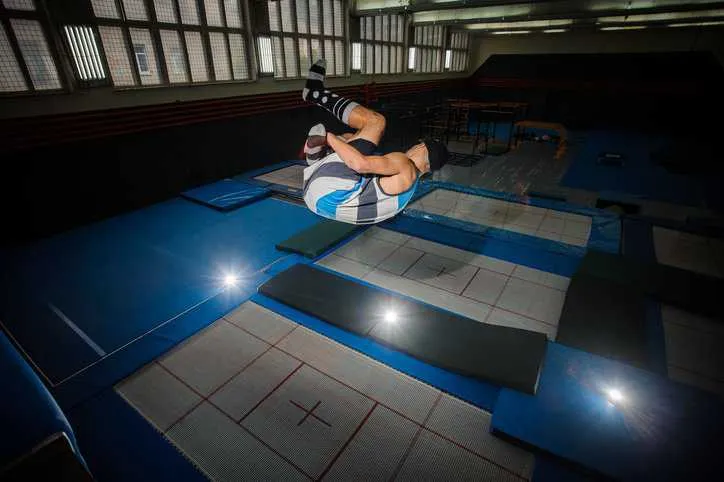ASTM F2970-22: Trampoline Courts

After watching trapeze acrobats perform tricks while bouncing off safety nets, American gymnast George Nissen invented trampolining in 1934. Nissen built the first protype trampoline to recreate their acrobatic, and it was initially used to train astronauts and athletes. Since its creation, the trampoline has grown in popularity, and today there are more than 1500 trampoline parks around the world. ASTM F2970-22: Standard Practice For Design, Manufacture, Installation, Operation, Maintenance, Inspection And Major Modification Of Trampoline Courts provides specifications for trampoline courts.
What Is ASTM F2970?
ASTM F2970-22 delineates requirements regarding the design, manufacture, installation, operation, maintenance, inspection, and major modification of commercial or institutional trampoline courts with the primary purpose of amusement, entertainment, or recreation.
This standard applies to institutional trampoline courts that are located in and around amusement, entertainment or recreational facilities. Such facilities include but are not limited to trampoline parks, amusement parks, theme parks, water parks, family entertainment centers, fitness centers, gyms, gymnastics facilities, sports facilities, skate parks, camps, shopping centers, temporary special events, carnivals and municipal parks.
ASTM F2970-22 does not apply to consumer trampolines, trampolines intended for use on water, trampolines intended for use as aquatic play equipment, trampolines primarily used for professional exhibition, or single user trampolines primarily used under the direct supervision of a trainer or coach.
Is Trampolining an Olympic Sport?
Besides being used in gyms and amusements parks, trampolines are also used in the Olympics. Trampolining made its first appearance in the Olympics at the 2000 Games in Sydney with women’s and men’s competitions. The only category at the Olympic-level, however, is individual trampoline, in which athletes perform acrobatics while bouncing on a rectangular trampoline. (At the international level, trampoline gymnasts compete in one of four categories: individual trampoline, synchronized trampoline, double mini, and tumbling).
During an Olympic competition, the individual trampoline can include simple jumps in the straight, pike, tuck, or straddle position to more complex combinations of forward and/or backward somersaults and twists. The two individual trampoline events involve athletes bouncing over 8 meters (over 26 feet) high in the air. Additionally, during a competition, the athletes perform routines composed of ten elements, scored according to their difficulty, execution, and time spend in the air. This Olympic sport is extremely technical, requiring absolute precision.
Recreational vs. Olympic Trampolines
Trampolines vary in sizes, shapes, types, and purposes. In regard to the trampoline bed (the strong fabric stretched between a steel frame often utilizing many coiled springs), recreational trampolines beds are relatively non-porous and do not offer great elasticity whereas the springs and beds used on Olympic trampolines are more porous and elastic, enabling athletes to jump much higher due to the higher tension. Because of this, Olympic trampolines require spotters (usually around six) during a trampoline competition.
The material on Olympic trampoline beds allows for higher jumps, improved ankle mechanics, and knee support. Since recreational trampolines do not shoot the trampolinist as high, there is a reduced risk of injury. So, a recreational trampoline is often used to teach straight jumps, landing, head, body, and control.
ASTM F2970-22: Standard Practice For Design, Manufacture, Installation, Operation, Maintenance, Inspection And Major Modification Of Trampoline Courts is available on the ANSI Webstore.






